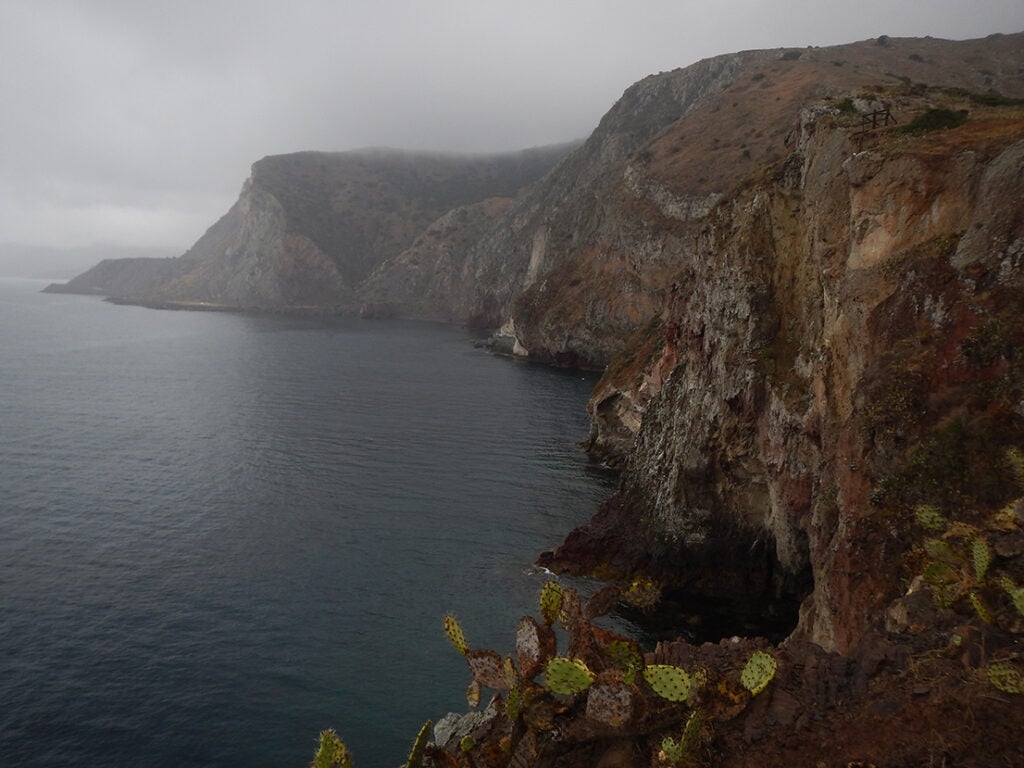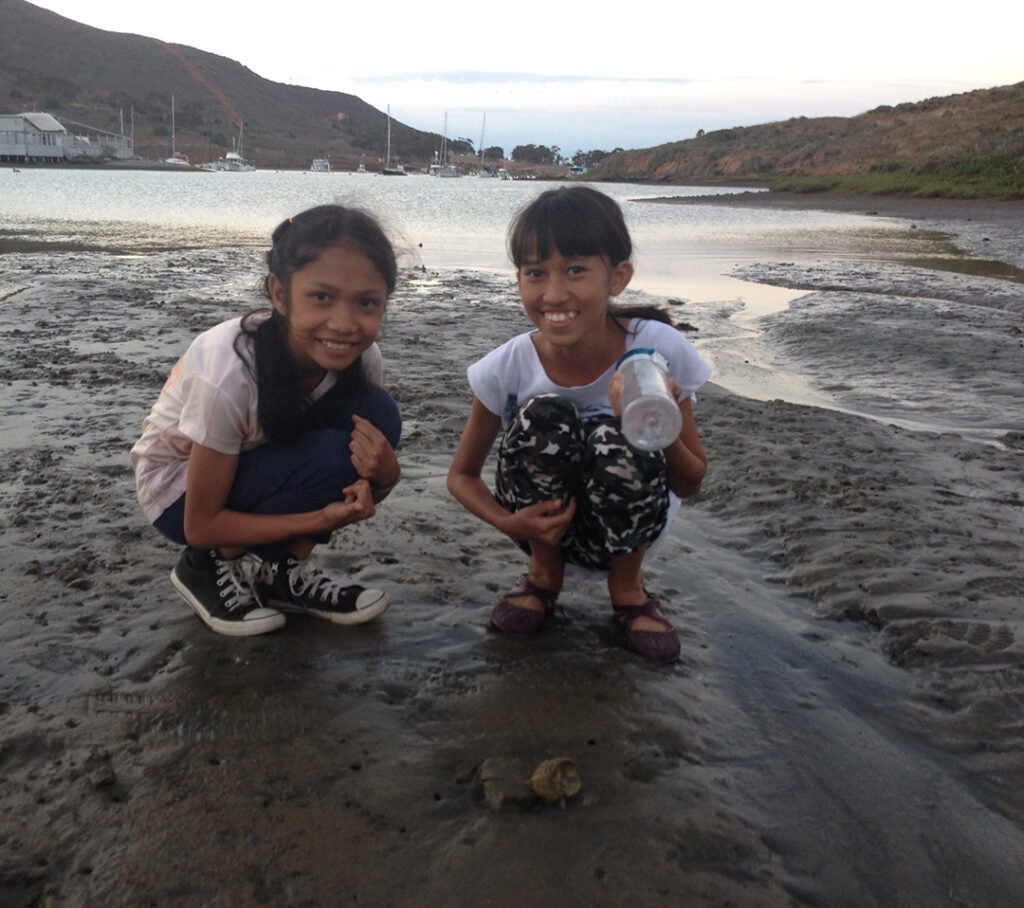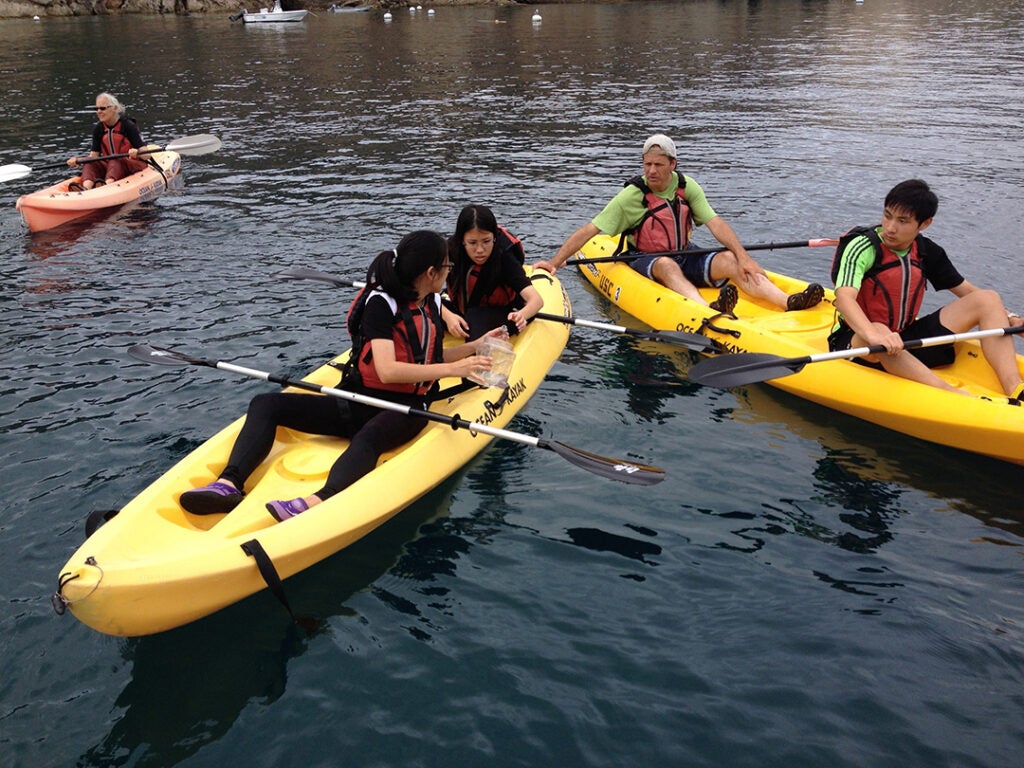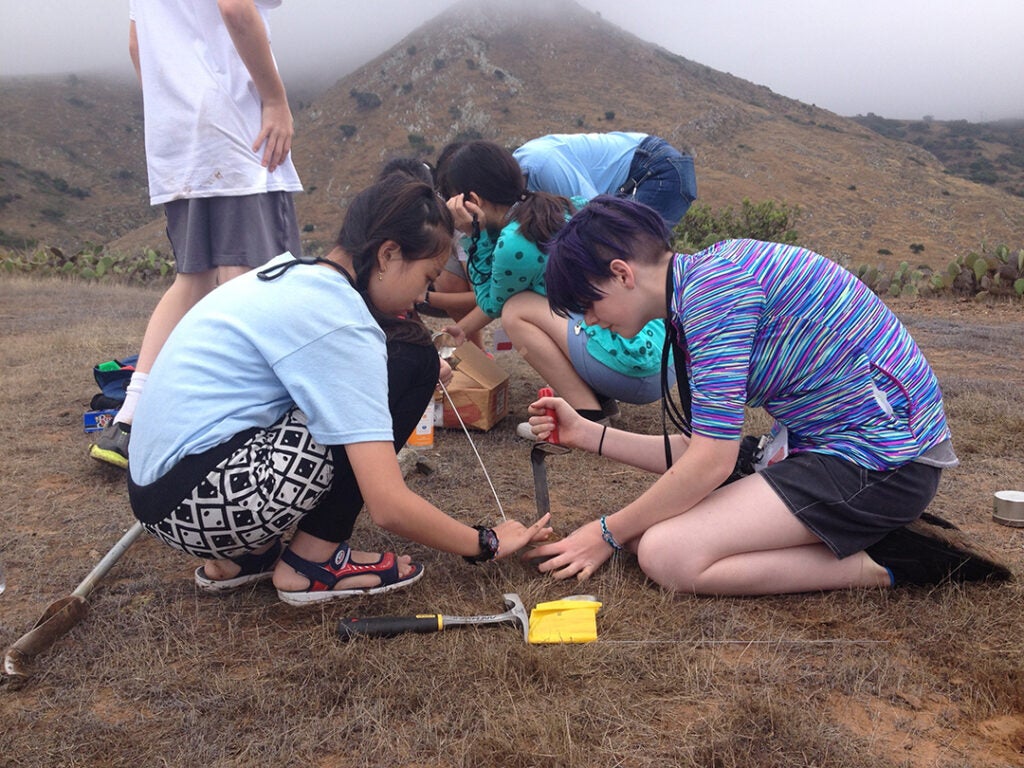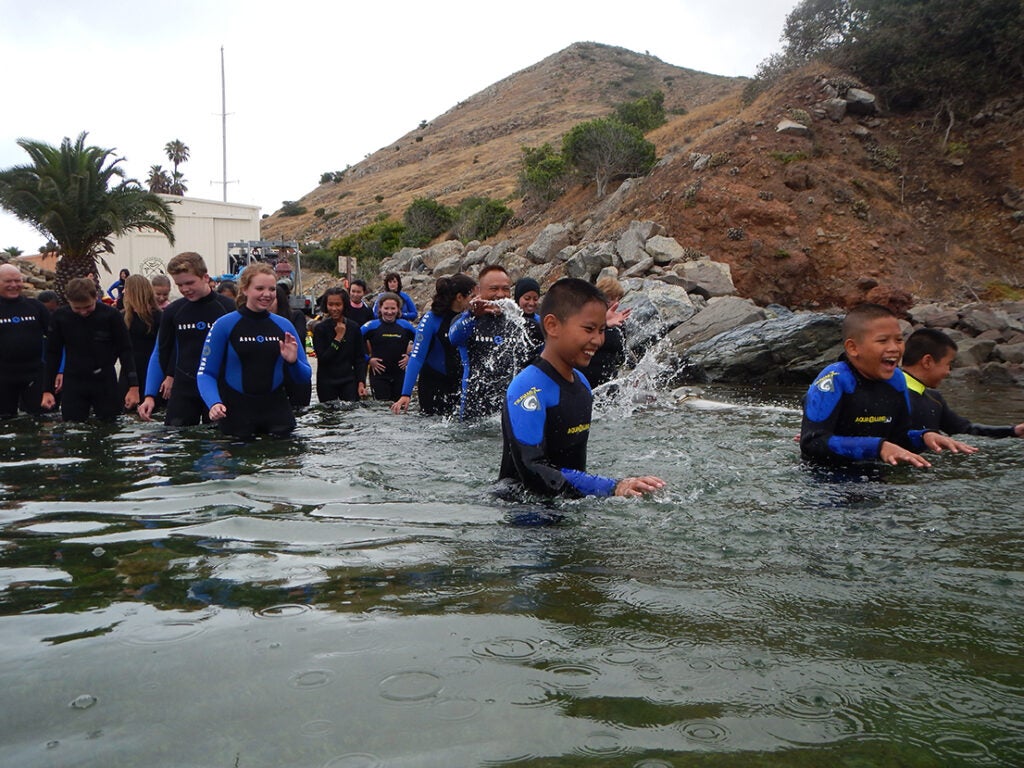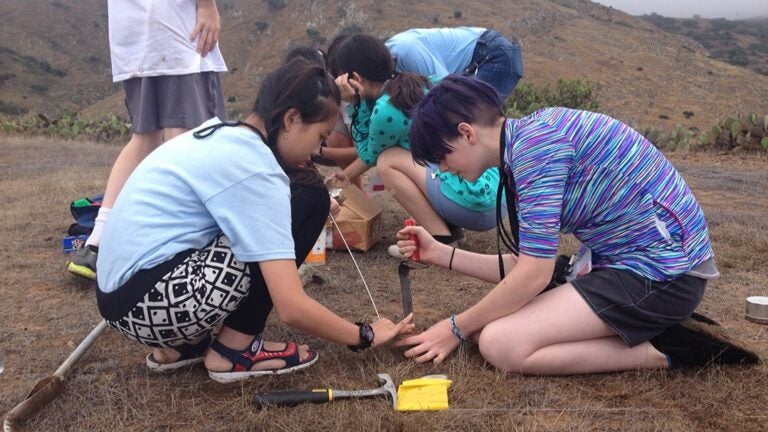
Next Generation of Science Stewards is GLOBAL
The sea off Los Angeles is calm today, but the remnant clouds of a distant hurricane hang flat and low over the water. I’m traveling to Catalina Island with 34 students and teachers, many of them international, for a two-day environmental science field trip as part of the GLOBE program’s annual conference. Global Learning and Observations to Benefit the Environment (GLOBE) is an international science and education program sponsored by the U.S. National Aeronautics and Space Administration (NASA), the National Science Foundation (NSF), and the National Oceanic and Atmospheric Administration (NOAA). One of its main goals is to connect a global community of students, teachers, scientists, and citizens to collect and share data about their local environments and put it in a global perspective.
As we enter the harbor, the island rises around us – it is dotted with cacti and dozens of small sea caves carved into the cliffs. It is a beautiful contrast from the urban port we left just 90 minutes ago. Linda Chilton, Education Programs Manager with USC Sea Grant, has helped to plan marine science activities for the students while they stay on the island, hosted by the USC Wrigley Institute for Environmental Studies. “This is a chance for the students to share their strengths. A chance for people with extremely different experiences and cultures to share a common language, which is science,” says Chilton.
Some students here are local to Southern California, others have travelled from across the United States, Peru, Taiwan, Croatia, and Thailand. Each one has brought a deep curiosity for science, and also for each other. Allyson Edwards, 17, is from Texas and attending her four GLOBE meeting. “There are so many different ages and ethnicities. It’s part of why we are here – not just for research or fun, but to meet people from different cultures,” says Edwards. “The relationships and bonds last.”
Many of the field activities offer a chance for the students to try something new. With the guidance of several lead GLOBE teachers, students use GLOBE data collection protocols to conduct fish counts inside a marine protected area, monitor tide pools, and collect and analyze ocean water and soil samples. The data is shared with schools around the world through the GLOBE database, as well as the Wrigley Institute and California’s MPA Watch program. When students return to the conference they will also present a research proposal based on the data they collect here.
Steve Engelmann is a teacher at Palisades High School near Los Angeles and one of the GLOBE teachers leading the trip. He says this experience helps students gain a greater awareness of the science community. “Media often portray a scientist as a guy in his basement, socially awkward,” says Engelmann. “But in reality, science is very collaborative, crossing languages and cultures.”
In the spirit of international collegiality, live video links are set up at field sites on Catalina so that students can share their experiences and research with those back at the conference in Los Angeles. On the dock, three girls lean in to share an iPad and describe their first time snorkeling in a kelp habitat earlier today. “There was a huge bass that swam right under me. The closeness of everything is amazing,” says Edwards. Lina Abbas, 17, from Michigan describes the experience as “awesome”. “We got to mix in fun with the scientific research,” says Abbas.
Throughout the day, I witness dozens of small moments where the combination of curiosity and excitement for the natural world leave lasting impressions on the students; and a dozen more moments where the educators work tirelessly to feed their curiosity. “Every single kid is amazing,” says Chilton as we chat for a few moments before she is off to the next activity. “I firmly believe in citizen science and their experiences with the GLOBE program makes sure we have young people ready to move into these roles as adults.”
As dusk falls, the students head out to the mud flats to search for fiddler crabs, eager to explore with new friends. These relationships are creating a new generation of science stewards and a cycle of learning that is connected to a global community. This global perspective is invaluable in the context of tackling issues that require international collaboration – such as climate change.
